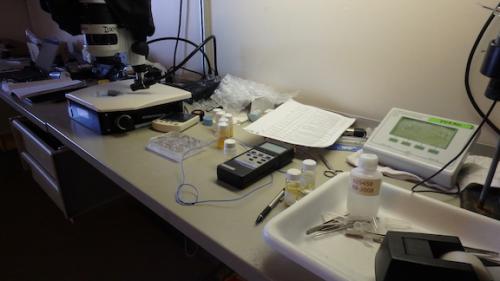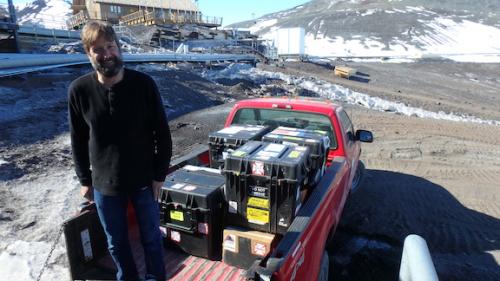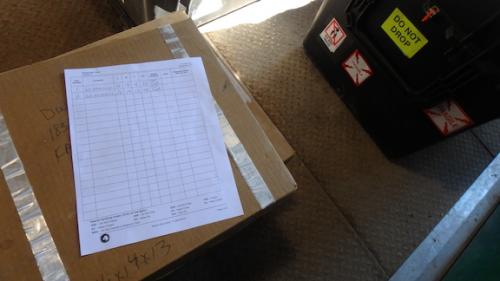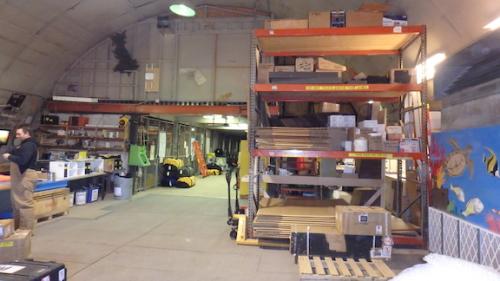 Closing down a field season and "checking out" of McMurdo is a multi-day, orchestrated frenzy of disassembly, packing, shipping, and inspection. All of this needs to go.
Closing down a field season and "checking out" of McMurdo is a multi-day, orchestrated frenzy of disassembly, packing, shipping, and inspection. All of this needs to go.
Closing down a field season and "checking out" of McMurdo is a multi-day, orchestrated frenzy of disassembly, packing, shipping, and inspection. Over the previous nine weeks, the six of us have occupied dormitories, laboratories, environmental rooms, and dive locker space. Before we are cleared to "redeploy" to North America, all of these spaces need to look as though we were never there. With our December 3 departure date fast approaching, the team began the departure process in earnest, finishing up experiments, returning sea spiders to their collection sites, and recovering instruments deployed in the field.
 Dr. Bret Tobalske has years of experience packing up field expeditions.
Dr. Bret Tobalske has years of experience packing up field expeditions.
The largest job by far is shipping equipment and scientific samples back to our home institutions at the Universities of Hawaii and Montana, a process facilitated by McMurdo's Science Cargo Department. Every sample is labelled and entered into a database, then specially packaged with the requisite import and export permits. Microscopes, laptops, electrodes, balances, cameras, force transducers and other equipment join the samples in massive, hard plastic shipping containers. Once it's all weighed, labeled, and ready to go, we load the bed of the Crary Lab pickup and haul everything up to the Science Cargo facility.
 Accurate paperwork and labelling are essential for ensuring timely receipt of our science cargo.
Accurate paperwork and labelling are essential for ensuring timely receipt of our science cargo.
Science Cargo is a small warehouse where equipment arrives and departs McMurdo. Backing the pickup to the hangar-sized doors, we're greeted by several employees, ready with the requisite paperwork and even more labels. "Fragile" and "Do Not Freeze" stickers are added to the dozens of boxes we're loading into the warehouse. We fill out manifests with lists of items and their estimated value. Finally, we indicate whether each package needs to get home quickly (via airplane) or if it can wait in transit until March, when the annual supply ship will arrive back at the USAP cargo facility at Port Hueneme, California. In all, our trip up to Science Cargo is a smooth process with staff members double checking our paperwork and labelling. Under an hour after arriving, we head back to the Crary Lab to return borrowed USAP equipment, mop, sweep, and scrub our lab spaces before our final lab inspection. Once we're done with Crary, we'll pack up drying dive gear, email in diving logs, and move on to cleaning out our dorm rooms, moving far too quickly to contemplate the weight of our impending departure.
 The Science Cargo facility ships, receives, and stores cargo in support of the scientific expeditions working out of McMurdo Station.
The Science Cargo facility ships, receives, and stores cargo in support of the scientific expeditions working out of McMurdo Station.
